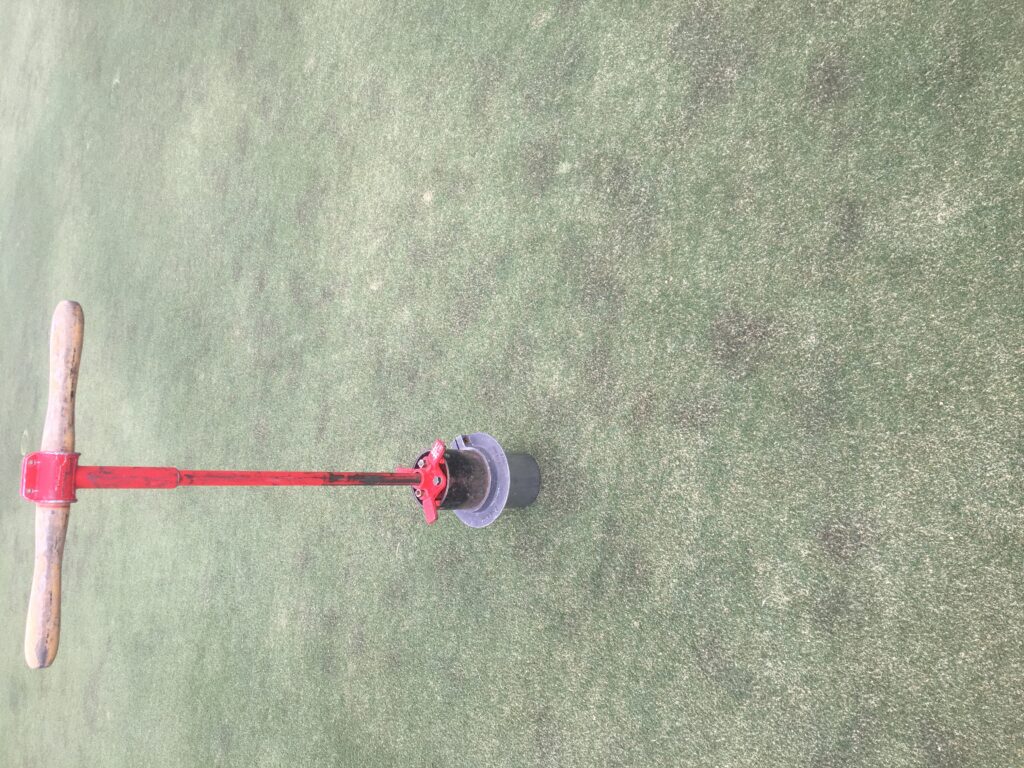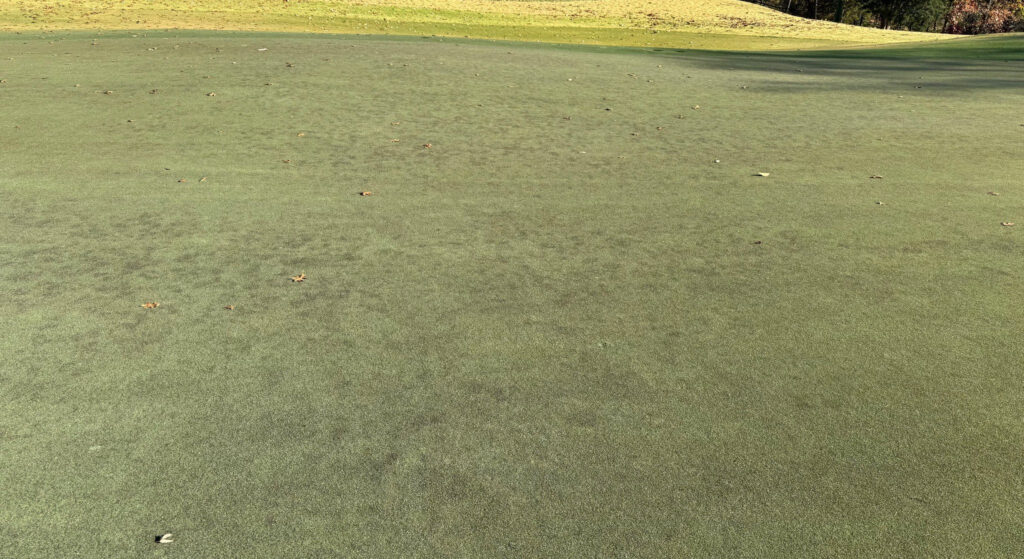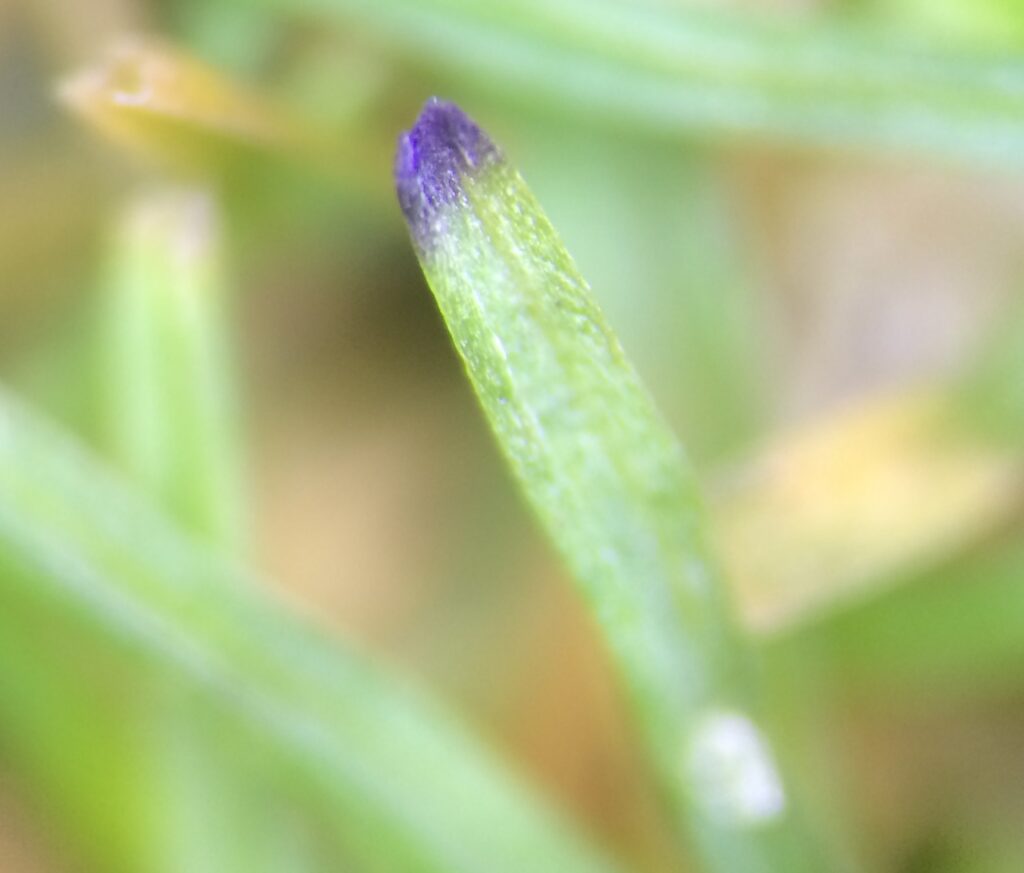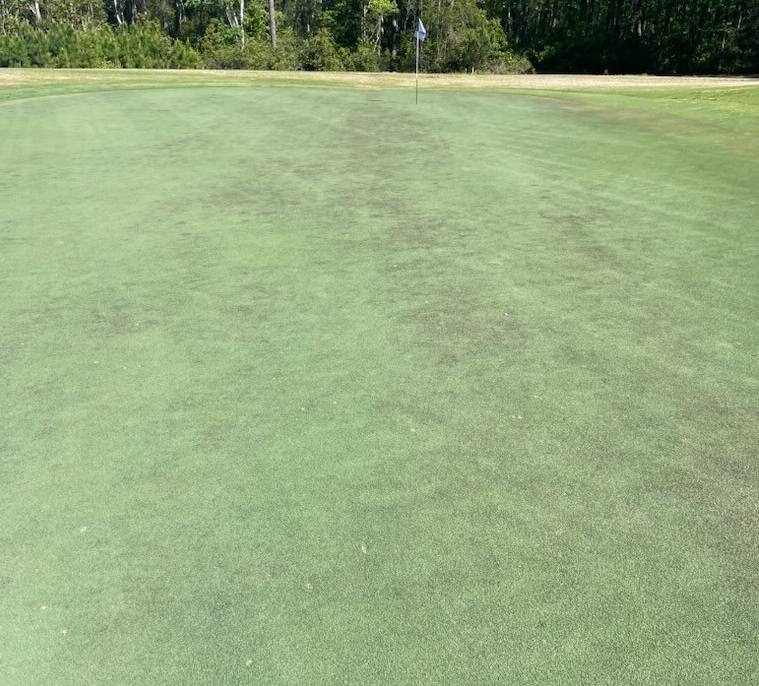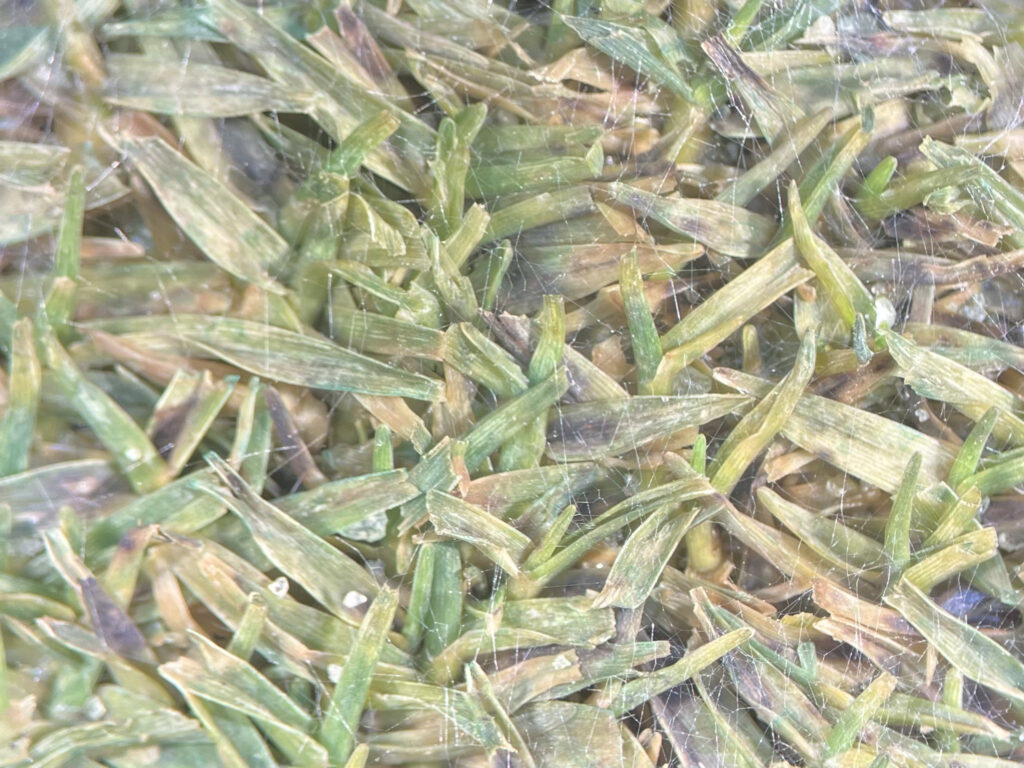Purple Spots on Your Ultradwarf Bermudagrass Putting Greens?
go.ncsu.edu/readext?975168
en Español / em Português
El inglés es el idioma de control de esta página. En la medida en que haya algún conflicto entre la traducción al inglés y la traducción, el inglés prevalece.
Al hacer clic en el enlace de traducción se activa un servicio de traducción gratuito para convertir la página al español. Al igual que con cualquier traducción por Internet, la conversión no es sensible al contexto y puede que no traduzca el texto en su significado original. NC State Extension no garantiza la exactitud del texto traducido. Por favor, tenga en cuenta que algunas aplicaciones y/o servicios pueden no funcionar como se espera cuando se traducen.
Português
Inglês é o idioma de controle desta página. Na medida que haja algum conflito entre o texto original em Inglês e a tradução, o Inglês prevalece.
Ao clicar no link de tradução, um serviço gratuito de tradução será ativado para converter a página para o Português. Como em qualquer tradução pela internet, a conversão não é sensivel ao contexto e pode não ocorrer a tradução para o significado orginal. O serviço de Extensão da Carolina do Norte (NC State Extension) não garante a exatidão do texto traduzido. Por favor, observe que algumas funções ou serviços podem não funcionar como esperado após a tradução.
English
English is the controlling language of this page. To the extent there is any conflict between the English text and the translation, English controls.
Clicking on the translation link activates a free translation service to convert the page to Spanish. As with any Internet translation, the conversion is not context-sensitive and may not translate the text to its original meaning. NC State Extension does not guarantee the accuracy of the translated text. Please note that some applications and/or services may not function as expected when translated.
Collapse ▲Purple haze all on my bermudagrass putting greens. Lately, this turf just don’t seem the same. Actin’ funny like Pythium blight but I don’t know why. ‘Scuse me while I scream at the sky! Help me! (credit to Jimi H. and Jimmy K.).
Several folks are reaching out about ultradwarf bermudagrasses exhibiting purple spots and wondering if a disease is active. The disease in question is Pythium blight and while it could be active another issue to consider is cold stress. The latter is especially prevalent when the plants produce new shoots after some warm weather then the temperature suddenly drops overnight or over a few days.
If you have a macroscope or hand lens examine the newest leaf emerging from the whorl and you will see distinct purpling of that leaf tip. Remember that these new leaves are young, succulent, and easily fried by cold weather. With Pythium blight, the symptoms will not be as bright purple and the margins of the affected areas will be a slightly different color. With the cold stress, the entire affected area is purple, and non-affected areas are not.
Please view the photos below to better compare cold-weather purpling to Pythium blight.
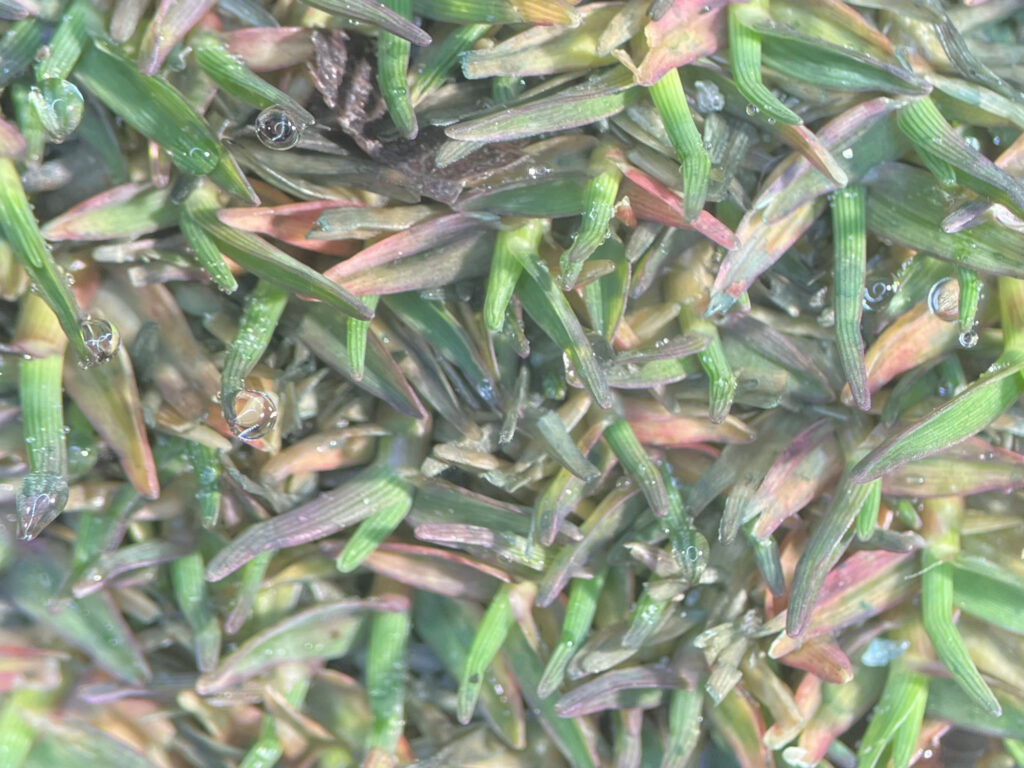
Purpling of leaf tips and edges as a result of cold weather on ultradwarf bermudagrass putting green plants.



